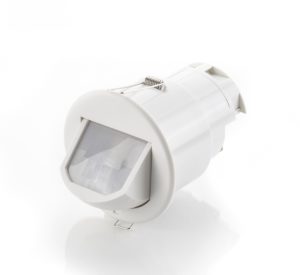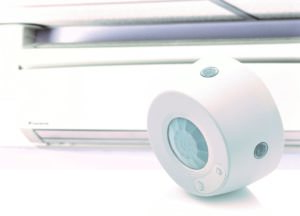Wellbeing is increasingly being talked about in building and construction spheres. So, how can lighting controls contribute to this notion, and how do electrical wholesalers jump on this supplier trend? Mike Brooks, Marketing Manager at CP Electronics, explains more.
Once of very little importance, wellbeing is now one of the biggest items on the agenda for companies and organisations of all sizes. Often starting from the boardroom, if this issue is not looked after properly, it can cause staff retention issues, health problems, absenteeism and more.
A key area of improving wellbeing is improving the environments where people work. This is leading to an extensive rethink along the supply chain as to how lighting controls can be incorporated into buildings. For wholesalers, it represents a huge opportunity to maximise revenue, but also to offer insight and expertise.
To do this, it’s first important to understand how lighting can affect our health and safety, and the best practice of combatting these issues.
Lighting – Physically and Physiologically
On the health and safety side, trip hazards are an obvious danger of poor lighting. This may seem needless to point out for those working in office-based environments, but it can be particularly important to businesses operating outside of ‘normal’ working hours, in outdoor spaces or within manufacturing facilities. The dark or industrial nature of some workplaces, like warehouses, can provide a significantly higher risk of falling or tripping.
Lighting should be positioned to combat dark areas, and the lighting should be bright enough for visible hazards to be identified. Users can now have complete control over their lighting, meaning lights can be set up to be dimmed instead of switching off entirely to keep an area appropriately lit.
Glare is also an area of huge concern. Defined as ‘difficulty seeing in the presence of bright light such as direct or reflected sunlight, or artificial light such as car headlamps at night’, this unwanted light can lead to headaches, eyestrain or sight loss. Veiling reflection is also similar to this, where high-luminance reflections can interfere with vision or the detail of a task, such as reflections on monitors, metallic equipment or lighting contrasts on the pages of a book.
Physiologically, circadian rhythm is another phenomenon that researchers are uncovering more about day by day. As Dr Peter Boyce, the long serving editor of the lighting industry’s peer reviewed journal Lighting Research and Technology (LR&T) found, light can send varying signals to the brain to produce different effects, such as circadian rhythm, which regulates the ‘body clock’.
This can regulate levels of alertness in individuals during specific points during the day, as well as potentially affect mood. Lighting control should ideally be positioned to manage levels of brightness in the built environment and enhance the benefits of circadian rhythm. However, there is still more research to be carried out, to ensure long term health aspects are understood.
Bright sales prospects
With lighting affecting the body and mind so dramatically, it pays for businesses to put lighting controls into their buildings. However, consultancy, full scale fit-outs, rewiring and installation can be costly and also disruptive.
Contractors and electrical engineers are also facing their own set of problems. Skillset shortages are already limiting construction activity across the board, while simultaneously increasing labour costs. The Chartered Institute of Building (CIOB) has reported that the industry will need to find 157,000 new recruits by 2021 in order to keep up with demand.
These two factors mean that for wholesalers, it can be hard to capitalise, even if wellbeing is front and centre. Modern lighting controls are now designed to overcome these challenges though, and solutions that are simple but effective are readily available for contractors to choose from.
Automatic dimming sensors, for instance, can be installed as a standalone product or as part of a fully addressable system. These intelligent detectors can measure the natural daylight coming in and dim the artificial lighting to the appropriate lux level.
Many standalone detectors are no-fuss when it comes to installation and programming. Detectors from the CP Electronics green-i range, for example, have integral power supplies, and many are programmable through push buttons or user-friendly infrared remote controllers.
Options like retrofit detectors that mount onto existing luminaires are also widely available now too. These retrofit solutions minimise hassle by taking away the need to change luminaires. For added ease and reliability, look for detectors that come pre-wired and are rated to IP65 for dust and water protection for extra durability in outdoor applications.

Not to be missed
It’s no secret that we live in a fast-paced, technologically dominated world. Trends like wellbeing along with others like sustainability and modular building will set the course for businesses and those working in the built environment for many years to come. Global powerhouses like Google, Facebook and Amazon have already pioneered the way, and more and more companies are looking at incorporating wellbeing initiatives like green spaces, recreational space, etc. all to keep employees happy and motivated.
While ensuring adequate lighting is needed, there should also be due consideration for another contributor to wellbeing, namely ventilation. Innovative air conditioning solutions can bring about better air quality and comfort for occupants. The GESM-AC for example is a battery-operated control that communicates with air conditioning units through passive infrared (PIR) technology. It is also designed for retrofit applications, so that installation and programming is easy and intuitive.
To ensure that this trend does not pass them by, wholesalers must ensure they are ready to meet the growing demand for lighting and HVAC controls. This starts with wholesalers gaining suitable knowledge and therefore being able to provide solutions to help contractors fulfil projects using fit-for-purpose products.
SALES PITCH!
Need that little bit extra to get your customer over the line? Here’s some great research.
Lighting and ventilation of course plays a big part in the grand scheme of wellbeing. In addition to improving productivity of those in the workplace, studies have demonstrated; improved recovery from those in surgery, a boost in sales in the retail industry and even have a positive effect on test grades among students.

FOR MORE INFORMATION
For more about CP Electronics and its lighting control solutions, visit: www.cpelectronics.co.uk


